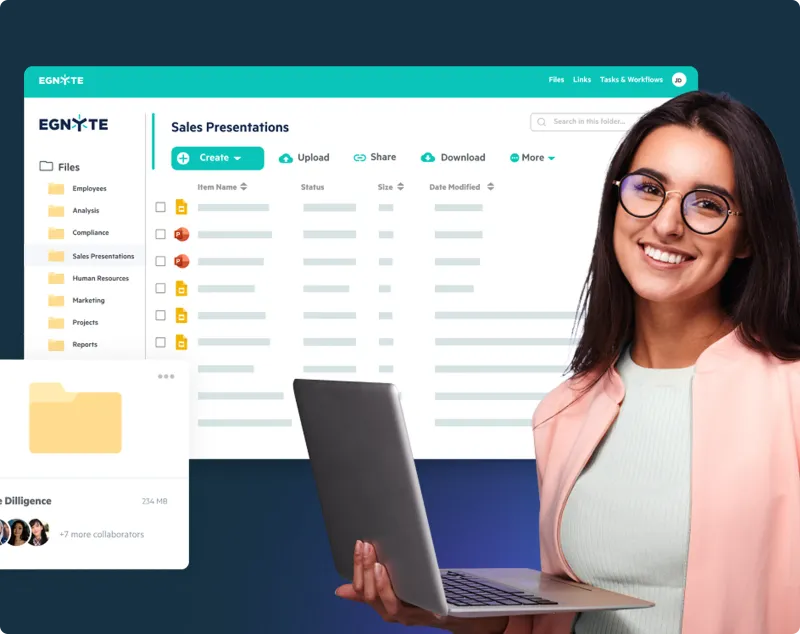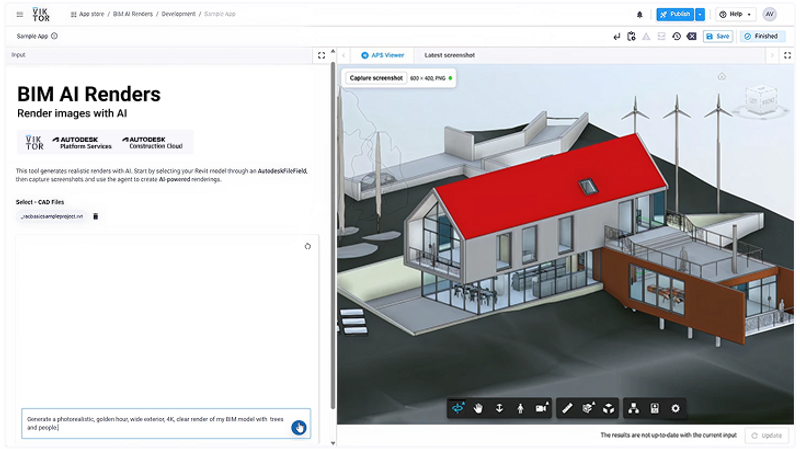Streamlined Design Development & Documentation with D.TO: Your One-Stop Building Assembly Solution
The built environment is responsible for over 40% of the world's carbon emissions, making it the largest contributor to such emissions. Unfortunately, the architectural design industry lacks practical solutions to support sustainable design practices for future zero-carbon economies, particularly in the mid-late design phases when architects determine the building assembly design, which significantly impacts the building's energy performance and lifespan, ultimately determining its carbon footprint. This requires extensive domain knowledge, including hands-on mentoring and close collaboration with other professionals, which has become increasingly challenging in post-pandemic work environments. Consequently, architects still rely on time-consuming drafting and exhaustive searches, which account for roughly 60% of a project's time and budget, rendering the process highly inefficient. Building material manufacturers, consultants, and contractors also face difficulties advertising in the highly competitive market, relying on passive marketing strategies such as trade-shows, lunch-and-learns, and random ad emails, leading to marketing failures.
D.TO aims to establish a stronger connection between the Architects, Building Product Manufacturers, and Contractors in the AEC industry by creating a collaborative platform.
D.TO (short for Design Together) is a digital solution that eases some very crucial pain points for Architects and Designers through documentation, in completing construction details, specifying building products, and reflecting consistency in final drawings and execution. Likewise, it enables material and product manufacturers to put out their products, components, and assemblies right where Architects need them, in the environment they work in. This way, D.TO transforms the architect’s design space into a knowledge-sharing and interactive marketing platform - where their two value propositions, “the collaborative way to learn more and work smart” for architects and “present yourself at the right time, place, and form,” to building product manufacturers can be accomplished.
AEC+Tech had a conversation with the co-founders of D.TO, Juhun Lee and Youngjin Lee, to explore their vision for the product, its unique features, and to get more insight about where they are headed. Read on to find out more!
1) How did the idea for D.TO come about? What inspired the creation of D.TO, and what problems is it solving?
We strongly think the introduction of BIM and advanced technologies has revolutionized architectural practice. However, the daily practice during the later design phases, including Design Development, and Construction (Contract) Documentation, didn't change as much as expected. It’s very apparent that the process of completing construction details, searching for and specifying building products, and reflecting them in the final drawings is still laborious and time-consuming. In fact, it's very similar to the process used back in the 1970s.
After researching the cause of this standstill, we realized that domain knowledge represented on construction drawings should be more critical than documentation per se. This is because construction details should tell you how to put all varied building components together. We understood that knowledge should be nurtured by the collaboration between architects, contractors, and building product manufacturers.
To address these issues, we created a knowledge-sharing platform that could connect these three stakeholders by helping architects resolve complex building assembly designs, search and specify products, and collaborate with contractors and manufacturers within the architect’s daily design platform.

2) What unique features does D.TO offer for the AEC industry?
D.TO stands for Design Together, which emphasizes collaboration and knowledge-sharing in the AEC. We have built D.TO with the aims of rebuilding the link between architects, contractors, and product manufacturers in the AEC space by developing a collaborative design platform that can:
-
Be integrated into BIM, the daily design platform, to maximize engagement among the three.
-
Assist architects in resolving complex building assembly designs to achieve a high-performance building envelope, minimizing building operational carbon and streamlining documentation.
-
Increase the architect’s capacity by mentoring the intricate mechanism of building assembly design.
-
Provide demand-matching marketing channels among the three.

Our platform’s features are able to:
-
Analyze design problems and data from the BIM platform directly.
-
Suggest design solutions in an interactive visual diagram.
-
Search for relevant building products by comparison within the BIM platform.
-
Integrate BIM components of the selected products into a project easily.
-
Simplify product specification and its coordination.
-
Collaborate with team members using markup tools directly on the progressive drawings within the BIM platform.
Have you seen tools similar to our platform before? You haven’t seen it so far because our platform pioneers in supporting architects with unresolved pain points during the Design Development and Construction documentation phase!
3) How does D.TO leverage cutting-edge technologies, such as AI and machine learning, to improve the design and construction process?
Our machine-learning-based solutions are still a work-in-progress and we expect to roll out some very interesting features/solutions, as follows.
-
Identify design problems in order to provide proper/right solutions based on what users work on. (Beta version will be rolled out in this quarter)
-
Utilizing prediction and detection models, we are developing a feature that can predict and prevent possible building defects in the building section and plan level to proactively provide proper/right solutions. (Expected by Q3, 2024)
-
Utilizing Generative AI and reinforcement learning, we are developing co-pilot features to ensure a hands-on, interactive engagement between D.TO and the user, while nurturing the next generation of architects. (WIP)

Fig. 3) Interactive Live Design Assistant Feature (Expected)
As you know, AI applications are getting hotter in the AEC space. We can see two main applications in the architectural design sectors: Feasibility Study and Representation. Form-making through feasibility study is to maximize spatial efficiency and is more likely to create a form that is far from aesthetic. Ironically speaking, form-creation should be the task that human architects want to enjoy. AI-powered representation tools look awesome because they can give you many different options in an extremely short time with a single click. But it distorts the designer’s intent too much. I felt like I am not an owner of my design any more. We utilize AI’s power for the technical aspects to SUPPORT human designers, which distinguishes us from other AI applications!
4) D.TO has likely evolved since its inception. What are some of the most significant milestones and improvements the platform has achieved lately?
The actual development started in July 2022. We released the first beta product for architects in June 2023 and for building product manufacturers in October 2023. Since the first release, the D.TO team has constantly improved UI/UX and engagement with users and added team project features.
We recently launched significant features that allow users to download design solutions in BIM format and BIM 2D components directly into the user's model, and published about 450 design solutions reinforced by our collaborator, Façade Design Consultancy. These new releases are receiving enthusiastic responses from the architect community.
5) In what ways does D.TO contribute to sustainability and environmentally conscious practices?
We have envisioned D.TO to contribute to environmentally conscious practices in multiple ways.
D.TO platform assists architects in resolving building assembly design for high-performance building envelopes to minimize the carbon emissions from building operations, which is 27% of the annual global carbon emissions. Our product selection tools (not in the market yet) will help architects intuitively search, compare, and specify sustainable products so a project can have lower embodied carbon. Our goal is to farm sustainable products and help architects make informed selections.
Lastly, D.TO envisions nurturing the next generation of architects capable of sustainable design knowledge by mentoring them through our interactive platform.
Our contribution will not be made unless architects use our tools actively. Architects should be the ones who can establish environmentally conscious practices through resolving design tasks, not fervently just talking about “sustainable design.”

6) Data security is a paramount concern for many businesses. How does D.TO ensure the security and privacy of the data shared and processed within the platform?
There are many approaches to ensure security and privacy. All data at any state is encrypted. We follow all the “best-practices” in security with Azure cloud services. All AI models (supervised learning-based) are trained with D.TO generated datasets or are using reinforcement learning-based models where we do not need any data to train.
Data processing between users and D.TO goes through a high level of abstraction, anonymization, and encryption.
And yes, we are more than aware of the significance of data security concerns in the 2020s, and we are in fact putting in a lot of first-hand effort into addressing it, even before we mainstream the use of D.TO in the industry.
7) What do you think are the user’s main challenges in adopting this product/service?
When discussing the advantages of the D.TO platform, it's worth noting how easy it is to use. The UI/UX has been designed by architects to be intuitive and perfectly aligned with the user's workflow, so there's almost zero learning curve.
Another advantage is D.TO's company detail library management. Unlike other providers that harvest all details from all projects, D.TO requires data curation per the D.TO data system. Users need to understand that clicking the harvest button could open a can of worms and result in misplaced data, which can prevent the platform from being used. That's why D.TO requires upfront orchestration, which may seem like a bit of a threshold at first. However, this approach will ultimately help your company make the most of the platform.
8) The design and construction industry is known for its complexity and variability. How does D.TO adapt to different project types and accommodate the unique needs of various clients?
We understand the complexity and variability of the AEC industry, particularly the design sector, and we struggled to address those factors. However, we soon realized that building science, which is one of the driving factors behind variability, must be consistent across all project types and clients. Therefore, our focus at D.TO is to provide the best standard design solution and design guidance to users, which they can adapt to their unique design approach.
9) What is your business model? How do you charge clients?
D.TO’s customers are architects and building product manufacturers/ specialty service providers. The cost of core features for architects is $20/seat per month. It will be $30/seat per month for the enterprise plan that provides a company detail library management feature along with the core features.
D.TO offers a competitive onboarding fee for building product manufacturers/specialty service providers compared to other competitors. We cut all unnecessary costs to alleviate the cost burden.
There is also a very generous trial version of the product available to test the features out, before on-boarding.
10) What future developments or updates can we expect from D.TO?
You can expect upcoming development from two venues: architectural content and software development. Regarding architectural contents, D.TO has published about 500 construction details focusing on exterior-interior configuration so far, and will publish more on interior constructions as well as exterior-interior retrofit later this year.
With software development, D.TO will launch a detail-library management platform, enhanced design collaboration features, tools for product comparison and specification, as well as a CRM + performance dashboard for building product manufacturers/ specialty service providers.


In conclusion, the people behind D.TO offer a lot of hope to the AEC space in enabling a more streamlined practice to ensure consistency in sharing crucial design and detailing information, as well as providing the most direct product marketing platform. Solving some very crucial pain points in the DD and CDs phases, D.TO challenges conventional workflows, to push the industry forward.
And as we always say, it marks some very exciting times ahead for the AEC space!
Would you like to experience D.TO in action? Request a live demo of the product by clicking here.
Recent Articles
Learn about the latest architecture software, engineering automation tools, & construction technologies

Pioneering Technical Report Management (TRM™) for AEC Firms: A Quire Deep Dive
Learn how Quire founder Kelly Stratton is reinventing technical reporting in our latest aec+tech interview, where its purpose-built TRM™ platform, WordBank-powered standardization, AI-driven Smart Search, quality control, and the Lazarus knowledge engine come together to help AEC, environmental, and CRE teams cut reporting time and errors while unlocking their institutional expertise.

Moving to the Cloud: Egnyte’s Staged Approach for Architecture Firms
As projects grow, AEC firms are rethinking data management and collaboration. This article outlines Egnyte’s six-stage Architecture Cloud Journey—a practical roadmap for moving from on-premise systems to secure, collaborative cloud environments. From assessment to continuous improvement, it shows how to streamline workflows, strengthen security, and future-proof with AI-ready infrastructure.

SaaS Founders: Are You Timing Your GTM Right?
This article was written by Frank Schuyer, who brings firsthand experience as a founder in the software and SaaS world. In this piece, he explores how founders can unlock faster growth and stronger market traction by integrating go-to-market strategy (GTM) from the very beginning of product development—rather than treating it as an afterthought.

The VIKTOR App Builder: Putting Automation into Every Engineer's Hands
The VIKTOR App Builder is changing how engineers automate their work. Built on VIKTOR’s secure, enterprise-ready platform, it lets users turn calculations, checks, and post-processing tasks into shareable browser-based apps—no coding required. In this interview, CPO Stijn Jansen explains why the team created it, how it bridges no-code, low-code, and full-code workflows, and what it means for the future of AI-assisted engineering.